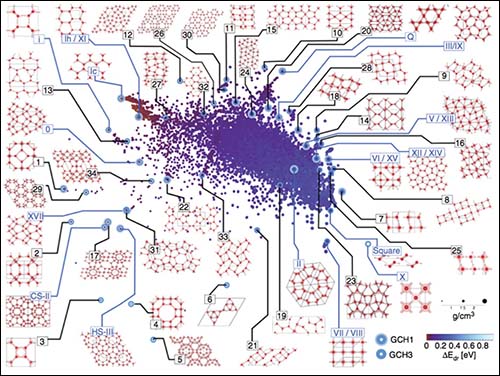By David Voss
In recent years, the techniques of machine learning (ML) have become an essential part of the computational toolkit of physical scientists in fields ranging from astrophysics to fluid dynamics. In October 2018, for example, the APS Editorial Office hosted one of their ongoing series of "Physics Next" workshops on the topic of machine learning, which has now been summarized in an article in Reviews of Modern Physics (G. Carleo et al. DOI: 10.1103/RevModPhys.91.045002).
ML comprises an array of algorithms and methods for extracting patterns from large data sets, techniques that have been enabled by advances in image recognition and computational power. Most researchers consider ML to be part of a wider effort in the general field of artificial intelligence (AI). The article by Carleo et al. begins with an overview of ML methods, including supervised and unsupervised learning, neural networks, generative modeling, and reinforcement learning. The review then goes on to specific applications in statistical physics, particle physics, cosmology, many-body quantum systems, and quantum computing.
For the field of fluid mechanics, an invited article in Physical Review Fluids (M. P. Brenner et al. DOI: 10.1103/PhysRevFluids.4.100501) mentions some specific cases where ML can be applied to two-dimensional turbulence, the physics of fish schooling, and turbulent combustion. Both Brenner et al. and Carleo et al. consider one the prime challenges of ML in physics: physicists want to learn about the mechanisms underlying observation, whereas ML tends toward black-box recognition of patterns in data.

Machine learning can identify structurally similar materials and determine which of the many predicted structures should be most stable under certain thermodynamic constraints, such as the ice phases shown here [From G. Carelo et al., Rev. Mod. Phys. 91, 045002 (2019)].
Another indication of the rise of machine learning is the increasing number of ML sessions and workshops at the APS March and April meetings. At the 2020 March Meeting, for example, there are pre-meeting events on "Machine Learning for Polymer Physicists," "Deep Learning for Image Processing Applications," and "Machine Learning in Statistical and Nonlinear Physics." One of the keynote events, the Kavli Foundation Special Symposium, was entirely on the theme of "Frontiers of Computation: Machine Learning and Quantum Computing."
With the increased interest in ML in the physical sciences, physicists may not only benefit from algorithmic advances but help advance ML. As Carleo et al. write, "As machine learning is incorporated into the physicist’s toolbox, it is reasonable to expect that physicists may shed light on some of the notoriously difficult questions machine learning is facing.
©1995 - 2024, AMERICAN PHYSICAL SOCIETY
APS encourages the redistribution of the materials included in this newspaper provided that attribution to the source is noted and the materials are not truncated or changed.
Editor: David Voss
Staff Science Writer: Leah Poffenberger
Contributing Correspondent: Alaina G. Levine
Publication Designer and Production: Nancy Bennett-Karasik
March 2020 (Volume 29, Number 3)
Articles in this Issue

